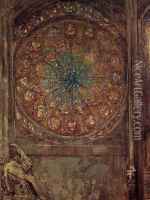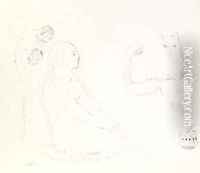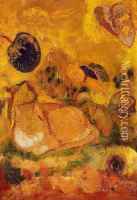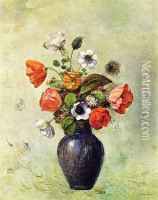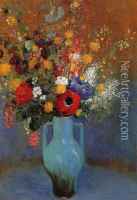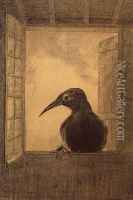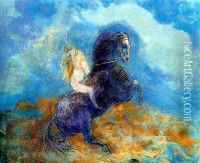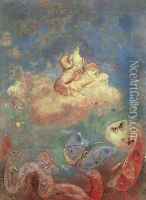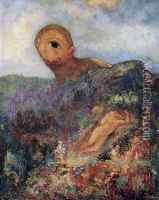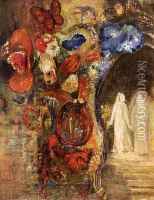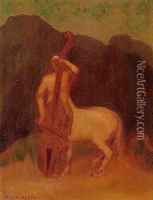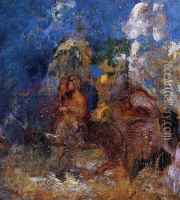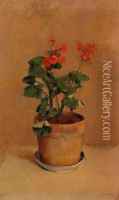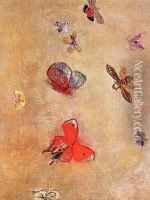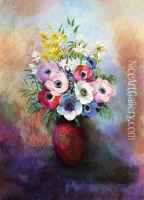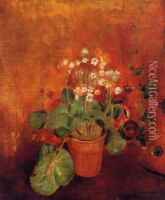Odilon Redon Paintings
Odilon Redon was a French symbolist painter, printmaker, draughtsman, and pastellist born on April 20, 1840, in Bordeaux, France. Redon is often associated with the late 19th-century Symbolist movement, a group of artists and writers who emphasized the expression of emotive or mystical ideas over representational or naturalistic depictions.
Redon's early work was primarily in charcoal and lithography, which helped to establish his reputation in the 1870s and 1880s. His work from this period, which he called his 'noirs', is characterized by dark, dreamlike scenes often filled with fantastical creatures and strange, ambiguous forms. These pieces were largely in black and white, which added to their mysterious and otherworldly quality.
It wasn’t until the 1890s that Redon began to experiment with color, primarily pastels and oils. His later work was much more vibrant and featured floral subjects, mythological scenes, and portraits, yet it maintained the dreamlike and enigmatic atmosphere of his earlier 'noirs'. The use of color marked a significant shift in Redon's work, aligning more with the emerging Impressionist and Post-Impressionist movements.
Redon was also influenced by literature, particularly the works of Edgar Allan Poe, and the ideals of the Symbolist movement, as seen in his series of lithographs illustrating Gustave Flaubert's 'Temptation of Saint Anthony'. His approach to subject matter, which was often introspective and focused on the inner mind and the portrayal of emotions, set him apart from his contemporaries.
Despite his association with symbolist and surrealist trends, Odilon Redon did not achieve significant recognition until the final decade of his life. He was admired by a younger generation of artists and played a role in the transition from traditional Symbolism to modernism. Redon passed away on July 6, 1916, leaving behind a body of work that has continued to influence artists and capture the imaginations of art lovers around the world.
